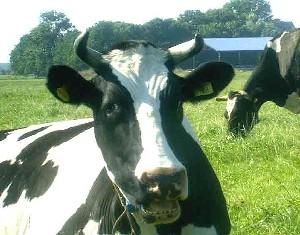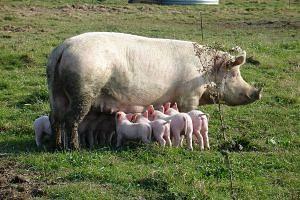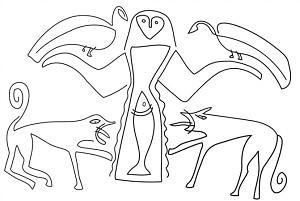
If you wish to understand yourself,
seek yourself in the wideness of the world;
if you wish to understand the world,
seek in the depths of your own mind.
Rudolf Steiner
Individual, specific action
We have now come to the end of our discussion of the various modes of observation. We started out with a question. In order to answer that question, we first applied four modes of observation that led us from the concrete object to the mental observation of its essence. Then we examined the three contexts in its environment, and started by observing the object and ended with the cohesion within the object's 'biography'. We have come to know the object and its environment in many ways.
You can now use the object's potential qualities and the cohesion within its 'biography' to answer the question.
If you manage to come up with an original solution, which is tailored to the situation at hand and which is suitable for you, the aim of phenomenology has been achieved.
- By searching for the core or essence of the object, you meet the first objective, that of understanding the spiritual activity behind the visible appearance.
- By placing the object in its unique environment and then trying to define an action, you meet the second objective, that of developing an individual, specific action that does justice to the object.
What is the difference between the normal way of answering questions and solving problems by the phenomenological method? The normal way of answering questions goes straight from the concrete observations to the answer. The researcher connects with the question, but not with the object. He or she must remain objective and could be replaced by a different researcher. The examination concentrates on simple, general, impersonal explanations, and studies only that part of the object which is of interest. Since the answer has general validity, unexpected reactions may occur. The only observational attitude that is applied is that corresponding to the solid (earth) element.
In phenomenology, the researcher connects with the object, and his or her observations are at least partly personal. The aim is to identify overall relationships, and to find a tailor-made solution for this particular situation, a solution that may not be applicable elsewhere. The system is less likely to show unexpected reactions.
| aspect | conventional | phenomenology |
| observations | objective, impersonal | subjective, personal |
| solutions | general, impersonal solutions | specific, individual solutions |
| systemreaction | may react in unforeseen ways | less risk of unforeseen reactions |
| approach | reductionist | holistic |
Some aspects of the conventional and phenomenological approach of science
An example of unexpected reactions in agriculture
Agriculture (like other areas) provides many examples of unexpected reactions by systems. More than a century ago, Justus Liebig discovered than plants grew well on artificial fertiliser. What he didn't realise was that these plants were more likely to become ill and became more susceptible to pests. To solve this problem, people invented pesticides, without realising, however, that these polluted the environment (leading, for instance, to DDT accumulation in the fatty tissues of polar bears).
An example of lack of involvement in livestock farming
Livestock farming presents many examples where 'inconvenient' body parts of animals are removed: the horns of some cattle, the tails of pigs, the beaks of poultry. All of these are removed, often in painful procedures. Veal calves are reared in the dark to produce light-coloured meat. All these measures can only have been invented by people who lacked involvement. If the researchers had empathised with the animals, they would have come up with other solutions for the problems of livestock farming, which do not involve maiming animals. Instead, changes would have been introduced in their management, housing and diet.
An example of individual, specific action: mastitis
A farmer's cows regularly contract mastitis. His handbooks tell him the conventional remedy against this disease is antibiotics. This would not involve making changes to his farming methods.
If he were to choose a phenomenological approach to the problem, he would work on the principle that mastitis doesn't always equal mastitis, but that the disease as it occurs in his cowshed is specific, individual. Cows do not just contract mastitis; there must be something wrong with the cows, something of which the mastitis is one of the possible expressions. The mastitis is the cow's signal that there is something wrong with the farming methods.
The farmer will look for the underlying cause of the mastitis problem. To this end, he needs to examine the cows, their circumstances and his own methods; he has to connect with the cows, the cowshed and the other circumstances, and empathise with the whole system. At the end of the process, it will become clear what measures are open to him. This solution will not be applicable to another farm, where the farmer, the cows and the circumstances will be different, and the farmer will look at them in a different way.
Such a thorough process of examination yields a permanent solution to the problem, and the farmer need not fear unexpected reactions from the system, for instance one in which suppression of the mastitis with antibiotics leads to fertility problems because the underlying causes have not been appreciated and removed.
Observing the spiritual world
Phenomenology bases its approach on phenomena that can be observed by the senses. It then tries to connect with the essence in order to come to individual, specific actions. But the range of options available to understand nature doesn't end there. It is also possible to observe spiritual phenomena directly. For instance, certain aspects of the vital body of plants or animals can be observed through clairsentience and clairvoyance, or indirectly through the use of divining rods or pendulums. And crystallisations or chromas of plant juices may provide indirect information.
Clairvoyance can also be used to study the soul body and reveal its colours. This shows the condition of the soul at a particular moment or over a longer period of time. These colours are universal and have been described in various publications.
It is also possible to observe elemental beings, that is, gnomes, nymphs, fire beings and higher order beings. It has been reported that many of such beings are present in our environment.
The bibliography includes a few books that can introduce you to these subjects. A preliminary basis can be achieved through the books included under the heading of meditation.

A cow with horns in the pasture: an example of a holistic approach

A sow with pigs in te pasture: an alternative for intensive pig keeping?

A drawing of a landscape being made by Marko Pogacnik
Exercises
Unexpected reactions
Search the relevant literature for examples of unexpected reactions.
Individual, specific actions
Give examples of general and individual actions. Try to identify the differences between the two. Try to identify different reactions by the object and its environment.
Have you ever performed an individual, specific action? Describe the circumstances, in terms of the original question, your attitude, the observations you made, the relationships (contexts) you found, etc.
After you have completed all the observations, you want to proceed to an individual, specific action. How do you arrive at the right action? Describe the developmental process.
